Advanced Platform Technology Center
Pedram Mohseni's Lab
BioMicroSystems Lab at Case Western Reserve University Case School of Engineering
Michael A. Suster, Ph.D.
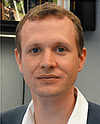 Michael Suster was born in 1978. He received the B.S., M.S. and Ph.D. degrees in electrical engineering from Case Western Reserve University, Cleveland, OH in 2002, 2006 and 2011, respectively. Previously, he was a Postdoctoral Researcher in the Electrical and Computer Engineering (ECE) Department at the University of Utah. He now holds the position of Research Associate in the Electrical Engineering and Computer Science (EECS) Department at Case Western Reserve University.
Michael Suster was born in 1978. He received the B.S., M.S. and Ph.D. degrees in electrical engineering from Case Western Reserve University, Cleveland, OH in 2002, 2006 and 2011, respectively. Previously, he was a Postdoctoral Researcher in the Electrical and Computer Engineering (ECE) Department at the University of Utah. He now holds the position of Research Associate in the Electrical Engineering and Computer Science (EECS) Department at Case Western Reserve University.
His research interests include analog and mixed-signal circuit and system design for wireless sensing, biomedical implants and advanced industrial applications. He has authored several papers in refereed IEEE journals and international conferences and has served as a technical reviewer for various IEEE publications. Dr. Suster is a member of the IEEE as well as the IEEE Solid-State Circuits Society.
Kanokwan Limnuson
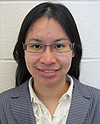 Kanokwan Limnuson (S'09) was born in 1982. She received the B.Eng. degree from Chulalongkorn University, Bangkok, Thailand in 2004 and the M.S. degree from Case Western Reserve University, Cleveland, Ohio in 2008, both in electrical engineering. She is currently working toward her Ph.D. degree at Case Western Reserve University. Her research interests include development of neural signal processing algorithms and their low-power implementation with analog and VLSI circuitry.
Kanokwan Limnuson (S'09) was born in 1982. She received the B.Eng. degree from Chulalongkorn University, Bangkok, Thailand in 2004 and the M.S. degree from Case Western Reserve University, Cleveland, Ohio in 2008, both in electrical engineering. She is currently working toward her Ph.D. degree at Case Western Reserve University. Her research interests include development of neural signal processing algorithms and their low-power implementation with analog and VLSI circuitry.
Bardia Bozorgzadeh
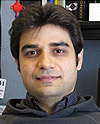 Bardia Bozorgzadeh (S'08) was born in 1983. He received the B.S. degree in electrical engineering from Sharif University of Technology, Tehran, Iran in 2006 and the M.S. degree from University of Tehran, Tehran, Iran in 2009. Since 2010, he has been working toward his Ph.D. degree at Case Western Reserve University, Cleveland, OH. His research activities involve analog and VLSI circuit design for neurotechnology with applications in low-power monitoring and manipulation of brain chemical signaling.
Bardia Bozorgzadeh (S'08) was born in 1983. He received the B.S. degree in electrical engineering from Sharif University of Technology, Tehran, Iran in 2006 and the M.S. degree from University of Tehran, Tehran, Iran in 2009. Since 2010, he has been working toward his Ph.D. degree at Case Western Reserve University, Cleveland, OH. His research activities involve analog and VLSI circuit design for neurotechnology with applications in low-power monitoring and manipulation of brain chemical signaling.
Ali Ebrazeh
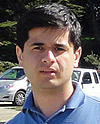 Ali Ebrazeh (S'08) received the B.S. degree in electrical engineering from University of Tehran, Tehran, Iran in 2004 and the M.S. degree in electrical engineering from Sharif University of Technology, Tehran, Iran in 2007, working on integrated circuit design for RF building blocks. Currently, he is working toward his Ph.D. degree at Case Western Reserve University, Cleveland, OH. His research interests include analog and high-speed circuit and system design for low-power high-data-rate biomedical microtelemetry.
Ali Ebrazeh (S'08) received the B.S. degree in electrical engineering from University of Tehran, Tehran, Iran in 2004 and the M.S. degree in electrical engineering from Sharif University of Technology, Tehran, Iran in 2007, working on integrated circuit design for RF building blocks. Currently, he is working toward his Ph.D. degree at Case Western Reserve University, Cleveland, OH. His research interests include analog and high-speed circuit and system design for low-power high-data-rate biomedical microtelemetry.
Mehran Bakhshiani
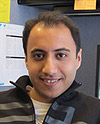 Mehran Bakhshiani (S'10) was born in 1984. He received the B.S. and M.S. degrees in electrical engineering from Sharif University of Technology, Tehran, Iran in 2007 and 2009, respectively. In 2009, he joined Iran Microelectronics R&D Center in Tehran, Iran where he was a member of the design team to develop a DVB-T receiver. Since 2010, he has been working toward his Ph.D. degree at Case Western Reserve University, Cleveland, OH. His research interests include analog/mixed-signal/RF integrated circuits for advanced CMOS biosensors with applications in impedance spectroscopy and broadband dielectric spectroscopy.
Mehran Bakhshiani (S'10) was born in 1984. He received the B.S. and M.S. degrees in electrical engineering from Sharif University of Technology, Tehran, Iran in 2007 and 2009, respectively. In 2009, he joined Iran Microelectronics R&D Center in Tehran, Iran where he was a member of the design team to develop a DVB-T receiver. Since 2010, he has been working toward his Ph.D. degree at Case Western Reserve University, Cleveland, OH. His research interests include analog/mixed-signal/RF integrated circuits for advanced CMOS biosensors with applications in impedance spectroscopy and broadband dielectric spectroscopy.
Shahab Shahdoostfard
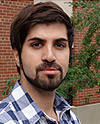 Shahab Shahdoostfard (S'11) received the B.S. degree in electrical engineering from Shahid Beheshti University, Tehran, Iran in 2008 and the M.S. degree in electrical engineering from Sharif University of Technology, Tehran, Iran in 2010, developing a wideband CMOS transimpedance amplifier as part of a homodyne receiver front-end for optical communication. Currently, he is pursuing the Ph.D. degree at Case Western Reserve University, Cleveland, OH. His research activities involve developing advanced microelectronic circuits and systems for bridging damaged spinal cord pathways.
Shahab Shahdoostfard (S'11) received the B.S. degree in electrical engineering from Shahid Beheshti University, Tehran, Iran in 2008 and the M.S. degree in electrical engineering from Sharif University of Technology, Tehran, Iran in 2010, developing a wideband CMOS transimpedance amplifier as part of a homodyne receiver front-end for optical communication. Currently, he is pursuing the Ph.D. degree at Case Western Reserve University, Cleveland, OH. His research activities involve developing advanced microelectronic circuits and systems for bridging damaged spinal cord pathways.




















